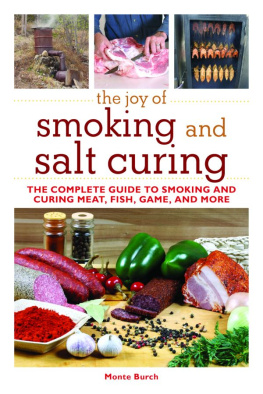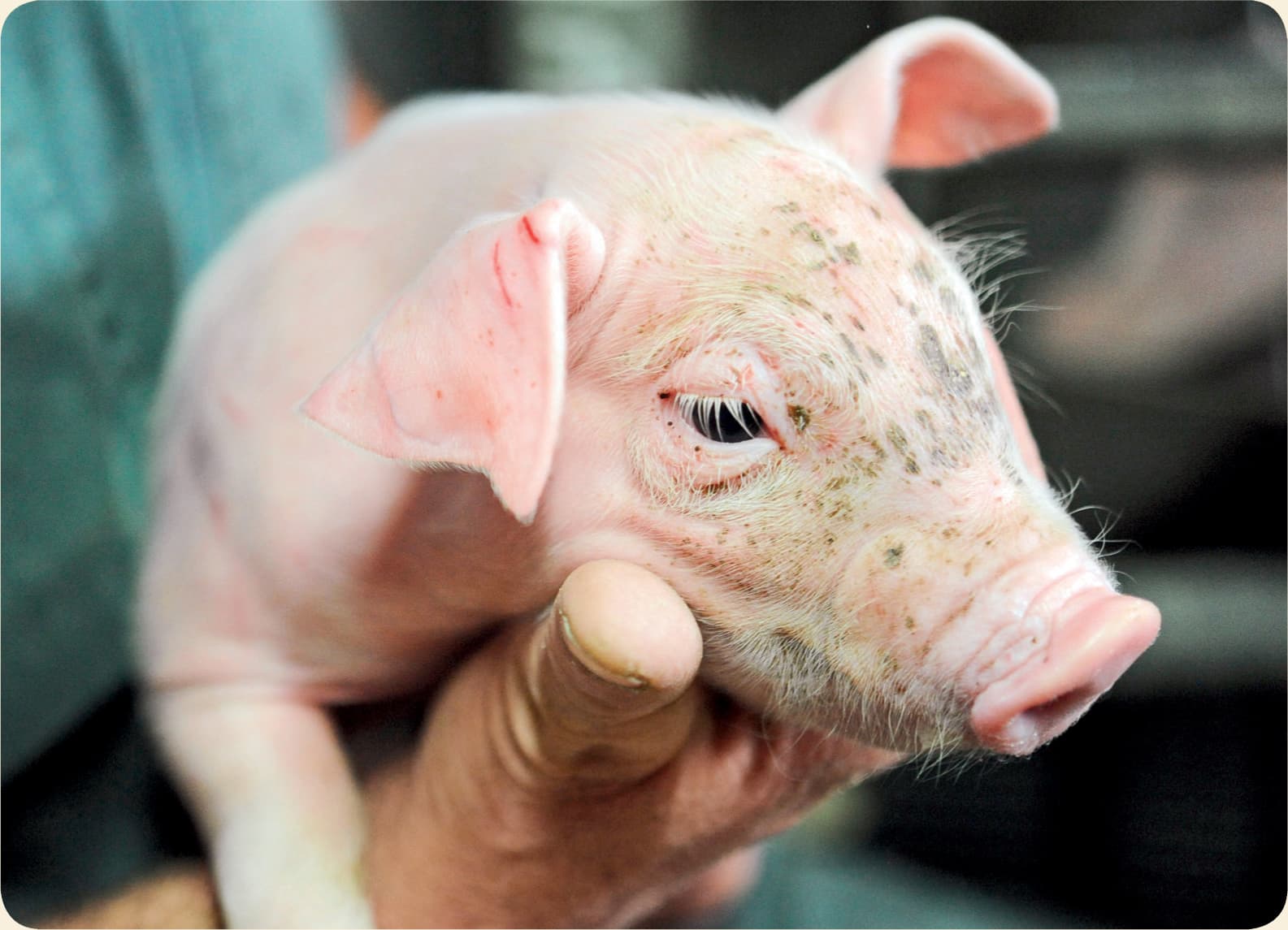T his book is dedicated to my brother, Bruce Hasheider, whose lifelong interest in pork production has served as an encouragement and inspiration for hundreds of 4-H and FFA members across Wisconsin, and programs that he has supported for many years.
The local food movement has been gaining in popularity in recent years as consumers have become more aware of where their food is produced, under what conditions it is producedsuch as humanely, organically, or conventionallyor the distance it travels to reach a market where they shop. This has led many to try their hand at raising live animals to then butcher them and process the meat for family use. Whether these animals are cows, goats, chickens, turkeys, sheep, or pigs, this back-to-the-farm approach is seen as a way to ensure animals are raised in ways that conform to that familys ideals and values, besides being an activity in which all members, whether young or old, can participate.
This book focuses on one farm animal speciesthe pigand how to raise it, butcher it, process the resulting carcass, and preserve the meat. It offers recipes to use virtually every part of the animal. It is the goal of this discussion to use every portion of the pig, except perhaps its oink. And that is the best way to honor the animalby using every possible part without wasting anything. Some parts of the pig will have multiple uses while other parts may have more limited ones.
Raising a pig from a very young age to butchering weight can be a rewarding experience by itself and one in which your entire family can participate.
Who, then, is this book for? And what will it provide?
The range of people who will glean useful information from this book can include lifestyle country farmers, urban food enthusiasts, and anyone with a determination to provide food for their family. What at first may seem an insurmountable task will be broken down into easily manageable sections that will explain all the processes involved.
Within the following pages, you will find reliable information about all the issues involved from start to finish: from securing and raising a small pig to it becoming a large animal intended for harvest.
You will learn how to safely and humanely raise that pig, dispatch a live animal, the steps required to deconstruct a carcass into useful portions, and the ways to preserve the meat, whether it is in standard cuts or made into sausage.
You can use the recipes included as a starting point for developing different family meals and learn about a variety of ways to use each cut and methods of preparation.
Meat preservation is an important aspect of any butchering program because you will be unlikely to use all of the fresh meat immediately. We will examine what preservation process may work best for different cuts and any alternatives. And you will learn how these cuts can fit into your and your familys diets with the numerous recipes found throughout this book. This may sound like an ambitious task, but the rewards of reading this book will more than make up for the time you spend with it.
Well begin by briefly reviewing the history of the pig in America. Porcine history, or the story of pigs, dates back 40 million years to fossils found of wild piglike animals that roamed ancient forests and swamps in present-day Europe and Asia. China began domesticating pigs about 7,000 years ago, and they were being raised in Europe 3,500 years ago. History records that Christopher Columbus took eight pigs with him to Cuba in 1493. In 1539, Hernando de Soto landed in southern Florida with thirteen pigs, and that gave birth to Americas pork industry.
In the following three hundred years, the pig populationboth domesticated and feral (those that escaped captivity and developed in the wild, the razorbacks)expanded as the migration of pioneers moved westward from the eastern seaboard states. In its early rural history, Manhattan Island was home to many colonists pigs. It reached the point where a solid wall was built on the north edge of the colonytodays Wall Streetto control roaming herds of pigs.
With their western migration, settlers took pigs along as a source of food as they settled new areas. The pigs rapid rate of growth, the diverse products derived from one pig, and the large numbers of offspring that could be produced from one female made pigs an early source of wealth and health. These three qualities are still very much in evidence today for those who raise pigs.
Today, pork is probably more popular than ever before. It is outpacing all other proteins in the food service industry. This increase is in all aspects of pork, fresh or processed, with a large demand for ham, breakfast sausages, and bacon.
This increased popularity is partly due to promotion from food service businesses, which have added pork items across the day and evening menus rather than focusing only on breakfast entrees. It is also due to the increasing awareness and consumer recognition of the healthful aspects of pork.
Besides having a desirable taste, pork is a nutritious meat, is easy to prepare, and can be offered at every meal. Pork is a lean protein, and in 2005 the United States Department of Agriculture (USDA) presented a study that stated that six common cuts of fresh pork are leaner today than fifteen years ago and are on average about 16 percent lower in total fat and 27 percent lower in saturated fat. Also, when compared to a skinless chicken breast, pork tenderloin is now just as lean. Pork is now popular for diet-conscious consumers.
The decrease in fat within the muscle has caused slight changes in how pork is grilled, baked, braised, or broiled, because with less fat interlaced within the muscles, the meat cooks faster. This shift in the components of pork muscle has a beneficial health aspect for you and your family. You can retain the flavor while lowering your fat intake. Choosing pork as a menu item can add variety to your home meals as well as a good protein source.
One advantage to raising and processing your own pork is that you can decrease the overall cost of the meat when compared to purchasing it at the store counter. Also, you know how your animal was raised, what you fed it, how it was treated, and a host of intangibles that you cant get elsewhere, such as working with a live animal.
A recent study made by the University of Wisconsin-Extension swine team shows that during the past three censuses, the small pig producer who sells one to twenty-four animals a year is one of the fastest-growing segments of agriculture. You will be in good company.
You do not have to raise a pig to have access to pork meat. They can be purchased fully grown from local pig producers.
Chapter 1
RAISING YOUR OWN PIG













